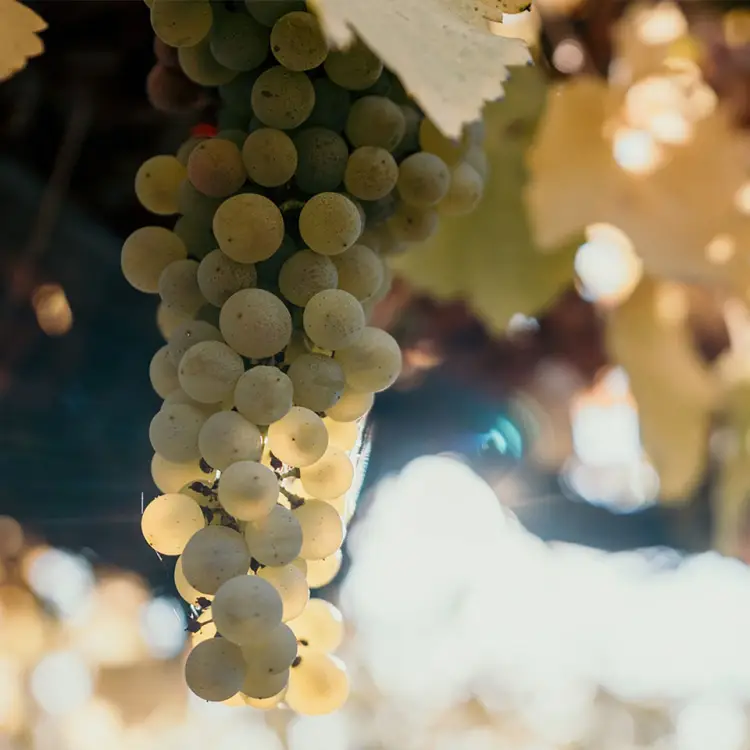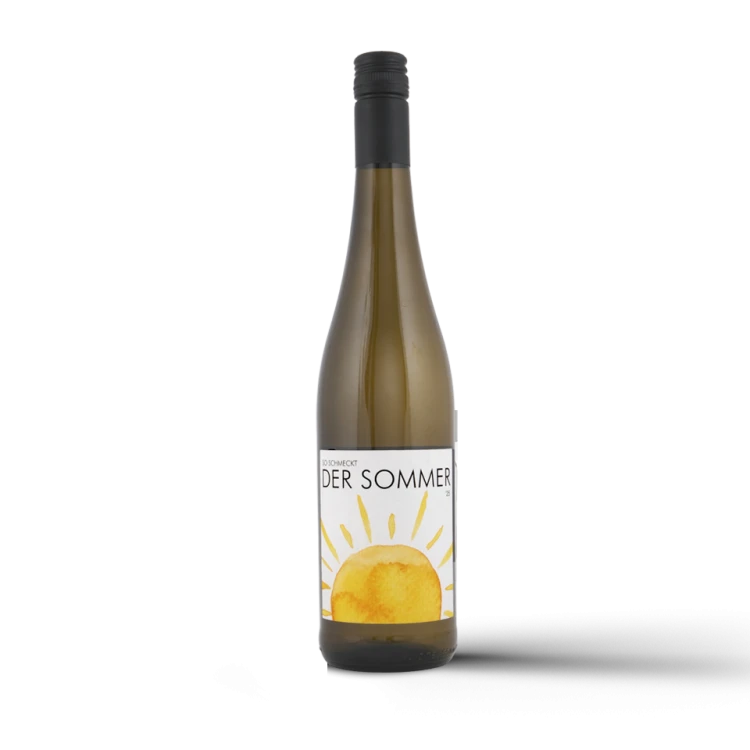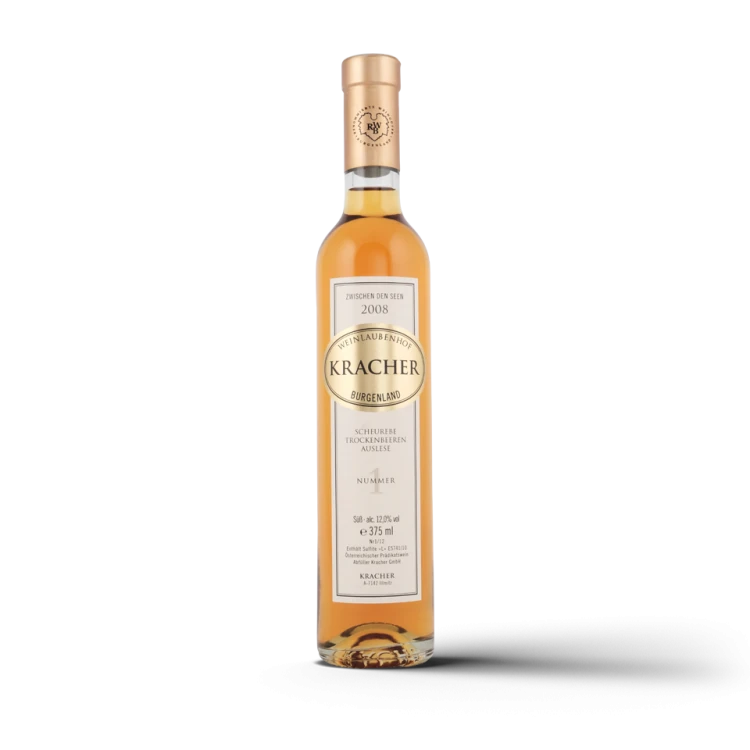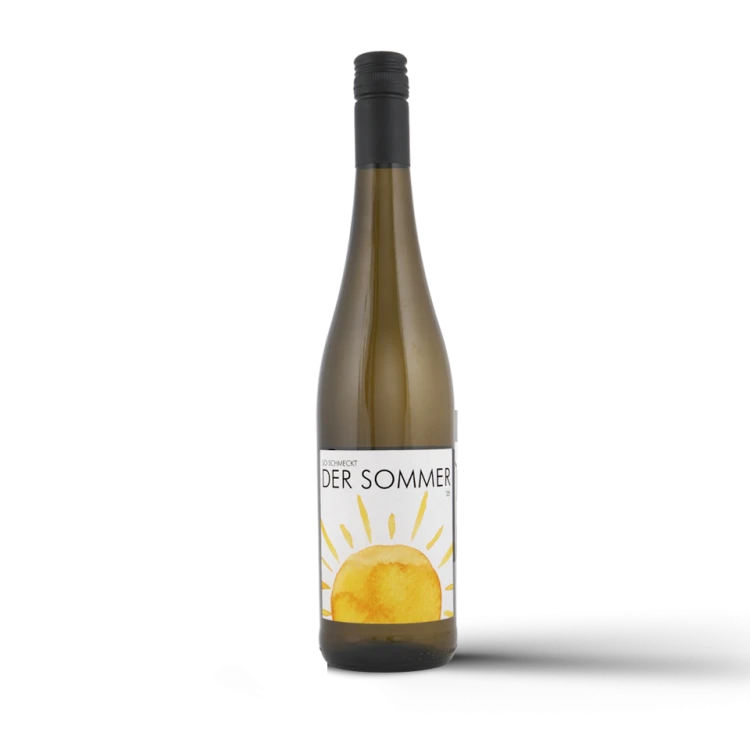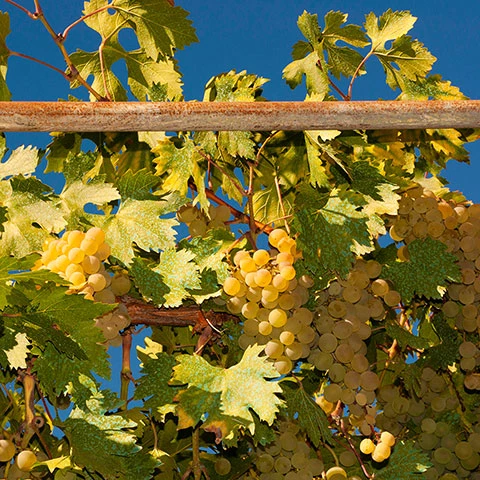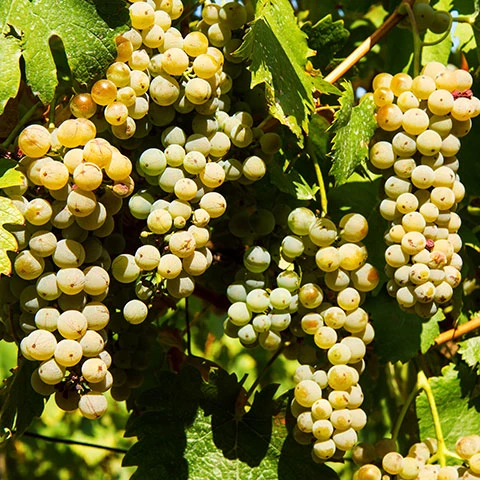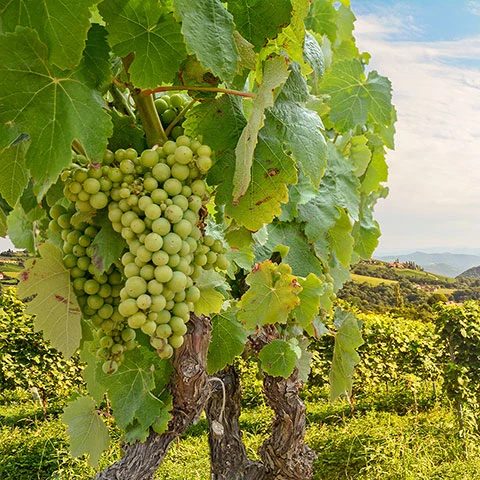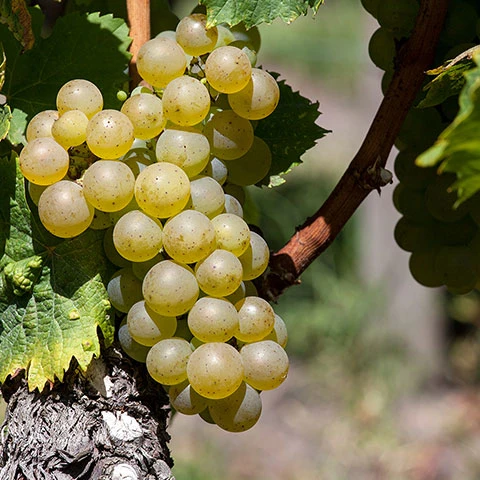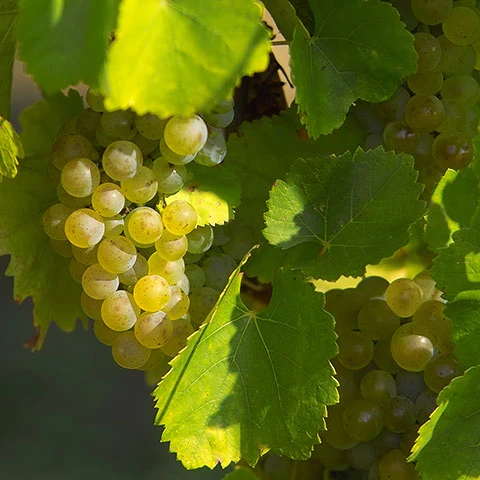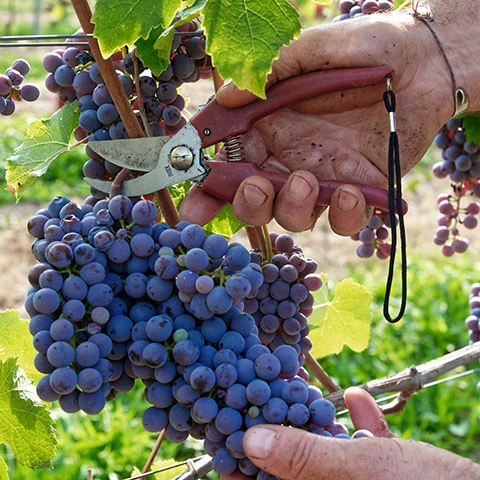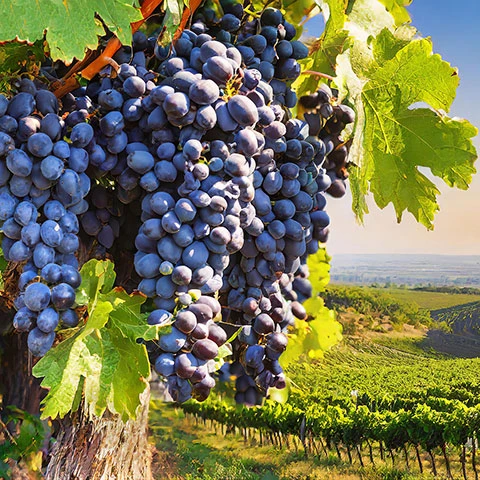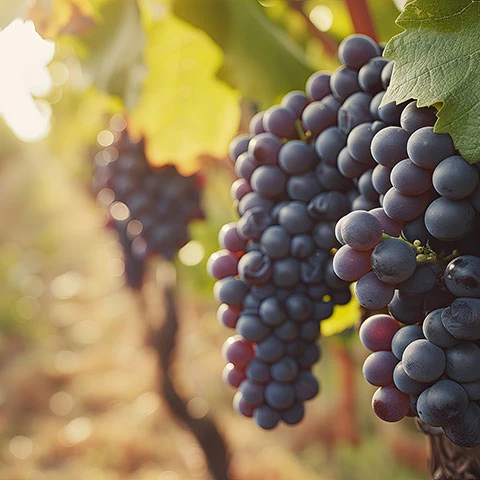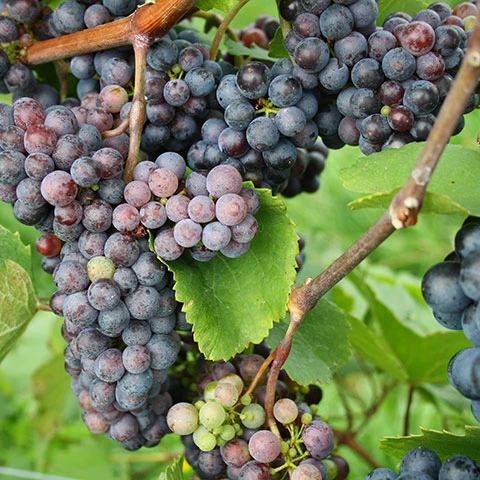Grape variety
Scheurebe
in 1916, the Swiss vine researcher Georg Scheu bred a new variety at the State Institute for Vine Breeding in Alzey, which he initially thought was a cross between Riesling and Silvaner. Only modern DNA analyses showed that it was actually Riesling x Bukettrebe. No wonder, then, that Scheurebe has such a distinctive flavour: Notes of cassis, peach, pear and sometimes exotic fruit sometimes give it a striking proximity to Sauvignon Blanc - which is why it was soon nicknamed Rheinhessen Sauvignon blanc. The variety initially had various names: Dr Wagner vine, S 88 or Sämling 88. After the Second World War, it was given its current name Scheurebe in Germany in honour of its breeder. The change of name was not only a gesture of recognition, but also a distinction from the Nazi era, as Dr Wagner was the state farmer leader in the Third Reich, and the number 88 was considered a problematic abbreviation then as it is today. In Austria, the name Sämling 88 has been retained to this day - there the variety is cultivated primarily on Lake Neusiedl, where it often forms the basis for noble sweet wines. Today, it is grown on around 500 hectares in Austria and around 1,400 hectares in Germany - mainly in Rheinhessen, the Palatinate, Franconia and the Nahe. Here it can be found in all styles, from fragrant dry to noble sweet. Its natural susceptibility to botrytis makes it an ideal basis for Spätlese and Auslese wines, which shine with exotic flavours, fine sweetness and lively acidity.
